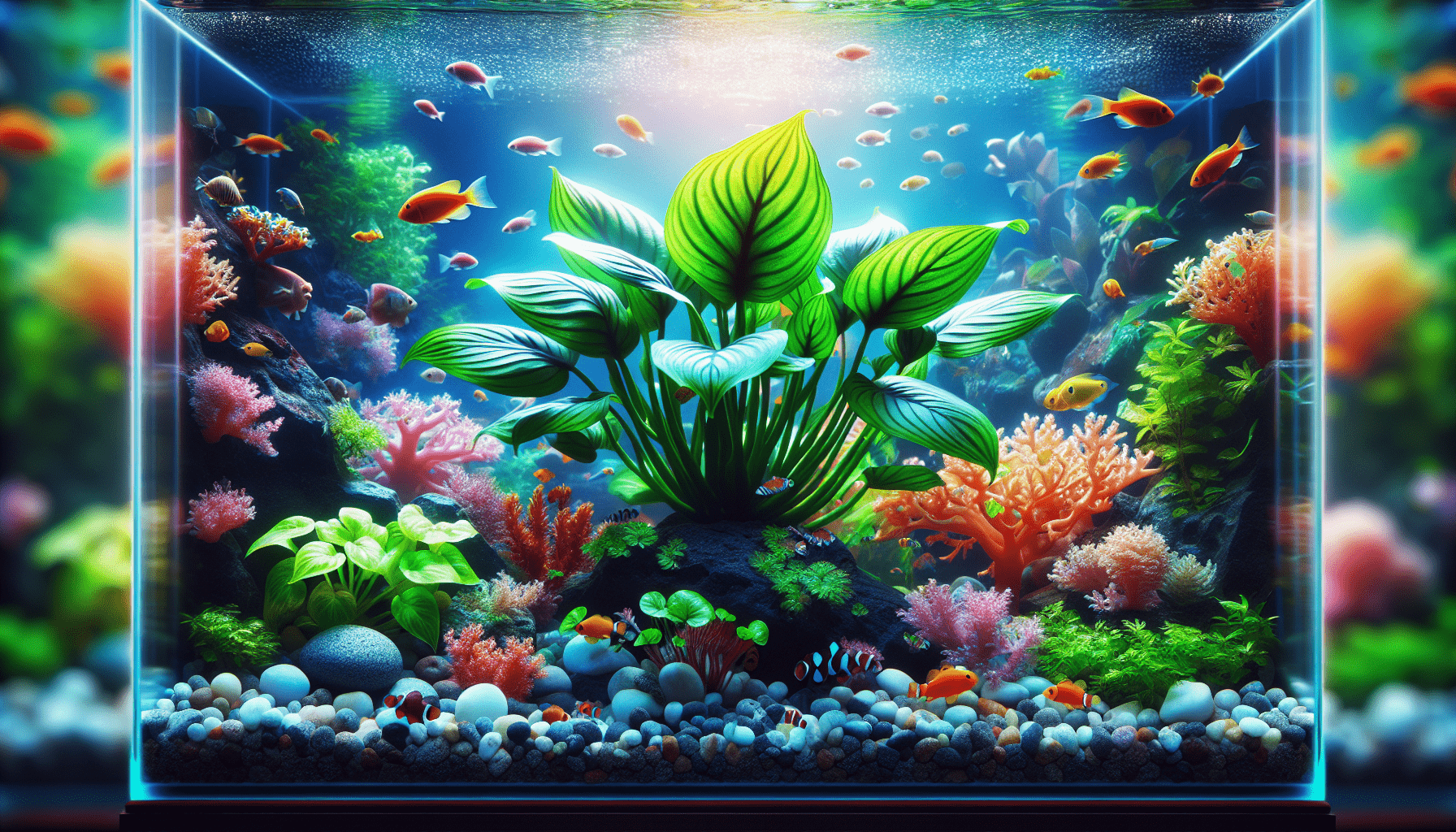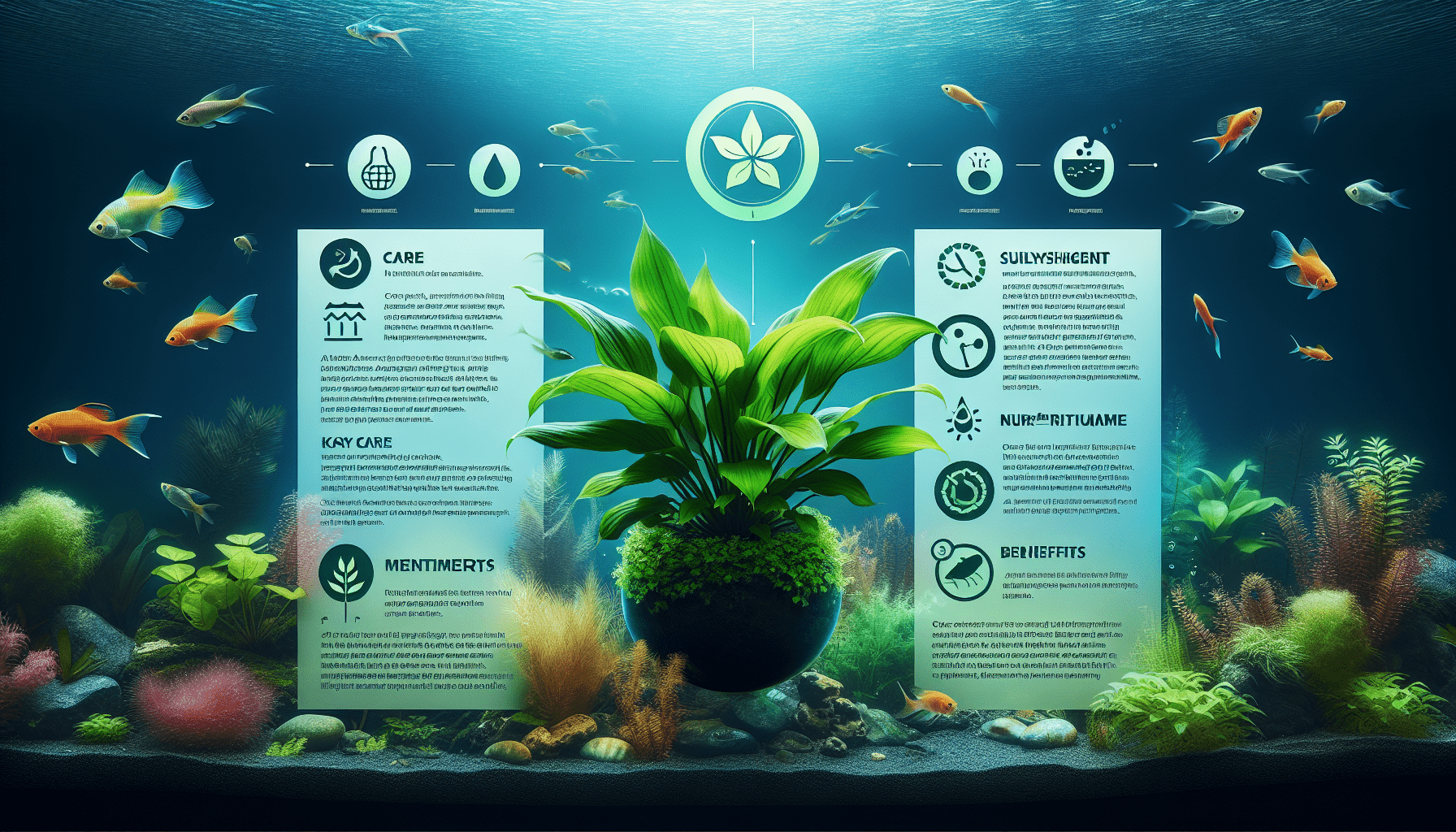In the world of aquatic botany, Anubias Barteri Var. Nana holds a significant position owing to its unique characteristics. As you embark on the journey to explore this intriguing species, you will unfurl facts about its origin, properties, growth patterns and the ecological role it plays within water environments. Many novices in aquascaping, as well as seasoned aquarium enthusiasts, ardently seek this species for its low maintenance requirements and aesthetic enhancement. Nevertheless, its label as a ‘weed’ may stir confusion, warranting delimitation. Understanding these attributes imparts insight into why this variety of Anubias merits attention in the realms of aquatic horticulture and environmental biology.

Definition of Anubias Barteri var. Nana
Anubias Barteri var. Nana is a species of flowering plants belonging to the family Araceae. This aquatic herb is predominantly used in setting up aquariums due to its ability to thrive underwater.
Scientific classification
The plant takes its name from Anubis, the Egyptian god of the afterlife. Botanically, it is classified under the Araceae family, the Anubias genus, and the barteri species. This particular variant is recognized as the “nana” due to its dwarfish characteristics.
Common names
Common names for Anubias Barteri var. Nana include Dwarf Anubias, Petite Nana, Nana Anubias and Anubias Nana. These names all reference the reduced stature of this variety compared to others in the Anubias genus.
Basic description and characteristics
Anubias Barteri var. Nana perfectly suits individuals seeking compact aquatic plants for their aquarium. You can quickly identify it from its dark green, rounded leaves developing from a rhizome. It maintains an average height of 5-10 cm, making it an ideal low-growing option in an aquascape design.
Origin and natural habitation
The native range of this tolerant, slow-growing plant spans various regions in West Africa.
Geographical origin
Anubias Barteri var. Nana is indigenous to certain countries within the western region of Africa, including Nigeria and Cameroon.
Natural habitats and environmental conditions
This variant of Anubias primarily grows along riverbanks, in marshes, and sometimes submersed in forest streams. It survives in semi-aquatic environments, explaining its resilience in different water conditions within aquarium settings.
Reproduction and growth
Anubias Barteri var. Nana has both sexual and asexual reproduction ways and a slow growth rate influenced by several factors.
Reproduction means
The plant propagates sexually by producing flowers, which pollinate to create seeds. It can also reproduce asexually through the division of its rhizome that forms new plant shoots.
Growth rate
Generally, Anubias Barteri var. Nana is characterized by a sluggish growth rate compared to other aquatic plants. It’s not uncommon to observe the plant producing only about one leaf per month.
Factors influencing growth
Lighting, temperature, water pH levels, and nutrient availability significantly influence the growth rate of this plant. Fertilizing the plant and maintaining optimal light conditions can boost its growth.
Cultivation and care
Caring for Anubias Nana doesn’t demand complex routines, aligning with its reputation as an easy-to-care aquatic plant.
Tank conditions and water parameters
While quite adaptable, Anubias Barteri var. Nana thrives in water temperatures between 72 to 82 degrees Fahrenheit, and a pH range of 6.0-7.5. The plant is remarkably resilient to a wide array of water hardness levels.
Plant placement in the aquarium
When considering placement within the aquarium, it’s essential to avoid burying the rhizome, which could lead to root rot. Anubias Nana does well when attached to surfaces such as rocks or driftwood.
Fertilization and lighting needs
Though capable of surviving in low light conditions, moderate lighting promotes better growth. For fertilizers, supplements rich in iron and other microelements are necessary to maintain its appealing green hue.

Propagation methods
To propagate Anubias Barteri var. Nana, one can undertake either sexual or asexual reproduction.
Sexual reproduction
Sexual reproduction is achievable through the flower seeds. Upon pollination, seeds grow, which can be planted to sprout new plants.
Asexual reproduction
Asexual reproduction is the most apparent and straightforward method. This involves fragmenting the rhizome and planting each piece separately, ensuring every portion has at least one leaf and a couple of roots for optimal growth.
Disease and pest problems
Despite the general hardiness of this plant, it’s not immune to diseases and pests.
Common diseases
The most common disease problem for Anubias Nana is root rot. It’s usually caused by burying the rhizome, which should always be left exposed when planting.
Common pests
The plant sometimes gets infested with algae, mainly due to exposure to intense lighting. You might also spot tiny pests like the snail-carrying eggs, which can result in an unwanted snail population in your aquarium.
Methods of pest and disease control
Regular maintenance and cleaning can keep pests and diseases at bay. Timely removal of any diseased plant parts and controlling the light intensity can drastically reduce pests and disease prevalence.
Benefits in aquarium
Anubias Barteri var. Nana not only adds visual appeal to your aquarium but also enhances water quality and offers natural shelter to the aquarium inhabitants.
Contribution to the water quality
This plant plays a useful role in filtering the water and absorbing toxins, consequently improving the water quality in the aquarium.
Providing shelter and habitat
The leaves of Anubias Nana are lauded for providing hiding spots for small fish and shrimp, doubling up as a nursery for their offspring.
Compatibility with other aquatic species
Compatibility with other species is a crucial factor to consider when introducing a new plant into an aquarium.
Compatible fish species
Most aquarium fish coexist harmoniously with this plant. Fish such as Tetras, Gouramis, Mollies, and even Shrimps find the plant’s structure ideal for exploring and hiding.
Incompatible species
Despite its wide compatibility, plant-eating fish like Goldfish and certain species of Cichlids are not the best companions for Anubias Nana, as they can incite damage to the plant.
Aquascaping with Anubias barteri var. nana
The versatile physical features of Anubias Nana make it a beloved choice among aquascapers.
Design considerations
When designing an aquascape, it’s recommended to use Anubias Nana around hardscapes or as a foreground, provided the tank is large. You can also pair it with taller plants at the background to create depth.
Aquascape styles that use Anubias barteri var. nana
Numerous aquascape styles embrace this plant, the most notable ones being Nature aquariums, and Dutch style tanks. Its small nature and ability to grow on rocks and driftwood make it perfect for a variety of styles.
Common problems and solutions
While Anubias Nana is generally easy to care for, you may occasionally experience some issues.
Yellowing of leaves
Yellow leaves are a common issue typically brought about by nutrient deficiency. Primarily, inadequate iron levels in the water could be the cause. Resolve this by adding an iron-rich fertilizer.
Slow growth
Slow growth is a characteristic of Anubias Nana. However, unduly slow growth might indicate insufficient light or nutrient supply. You can remedy this by adjusting your lighting and adding necessary fertilizers.
Root rot
Root rot occurs if the rhizomes are buried in the substrate. Always ensure the rhizome is exposed to prevent this issue. In case it has already occurred, remove the rotten parts to prevent the decay from spreading to the whole plant.